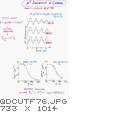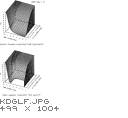
|
In transverse field (TF), as long as the
random local magnetic fields (RLMF)
due to nuclear dipole moments
are small compared to the applied field Ho,
their only effect will be to add or subtract
their components parallel to Ho
so that different muons precess at different frequencies
and get out of phase with each other after a while.
Such ``dephasing'' is technically not true
relaxation, since the muon polarization can be
fully recovered by a suitable 180o pulse
of RF power; hence the terminology ``T2''
as opposed to ``T1'' and all that.
If the RLMF change with time, whether due to nuclear
spin fluctuations unrelated to the muon or to muon diffusion
between sites with different static RLMF, then true relaxation
can take place. Abragam provided a general relaxation function
Gxx(t) from which the muon hop rate
can be extracted given a knowledge of the static width of the
RLMF distribution (assuming the latter has a gaussian shape).
|

|
In weak longitudinal field (LF) and (by extension)
zero field (ZF) the situation is more complicated:
all three components of the RLMF contribute to muon
``relaxation'' and the distinction between ``T1''
and ``T2'' becomes blurred. The static dipolar
ZF relaxation function Gzz(t) worked out
many years ago by Kubo and Toyabe can be ``dynamicized''
by several methods including that of Kehr, to produce
dynamic functions that can be fitted to extract muon hop rates
more precisely.
|

|
Analogous functions can be derived for lorentzian
distributions of RLMF, which are more appropriate for
dilute systems of strong moments.
However, the lorentzian distribution is fundamentally
non-physical, having an infinite second moment;
in reality there is always a ``cutoff'' (maximum possible)
local field so that fast enough hopping will cause the
relaxation rate to decrease eventually. In a truly
Lorentzian field distribution there is no such
``motional narrowing.''
|





